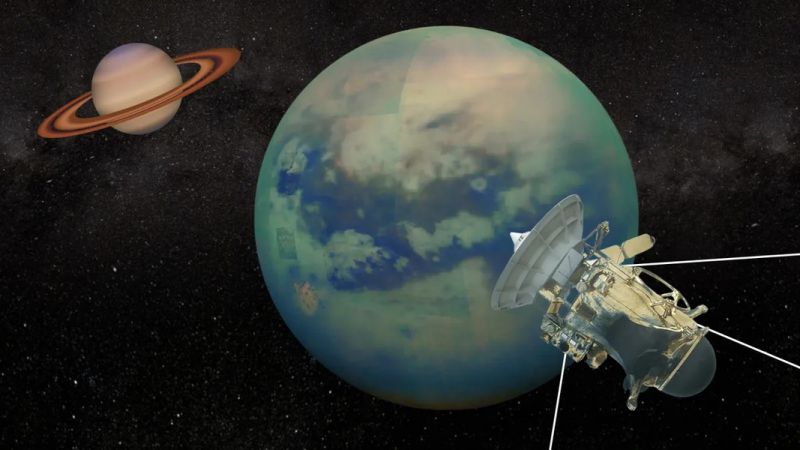According to a new analysis from scientists at the University of Nottingham, we don’t have a lot of alien company.
On June 15, two researchers published a paper in the Astrophysical Journal arguing that the Milky Way – which sports about 250 billion stars – could host as few as 36 alien societies. That’s a small number, and rather less than the number of races that have appeared in Star Trek. The authors supplement their piddling tally with a second, more generous analysis in which they say that, OK, the count might be as many as a thousand.
Either way, their conclusion is that – like Michelin Star restaurants in Wyoming – extraterrestrial civilizations are few and far between. The implication is that our nearest cosmic chums are at least several thousand light-years away.
If so, finding them will be hard, and having a conversation will be impossible.
So how did these British boffins arrive at such a depressing estimate? After all, there have been enough previous studies on this topic to fill a small horde of hard drives. Some of these conclude that the Milky Way houses millions of societies. Others claim that, nope, Earth is special and alone.
The Nottingham authors arrive at their low-ball estimate by using their own variant of the Drake equation – everyone’s favorite method to gauge alien head counts. This equation, which can be found in the final chapters of nearly any astronomy textbook, is a concatenation of seven parameters that, when multiplied together, yield the number of technologically adept societies in the galaxy. The parameters include the abundance of Earth-like planets, the fraction that spawn life, etc.
However, it’s the equation’s last term that really rules the roost. It’s the number of years that a technological civilization maintains its mojo. For how long does a society that’s mastered physics and technology continue to beam radio or light waves into space? After all, if they stop doing so, we may never find them.
In estimating the lifetime of a technological species, the Nottingham researchers make a big assumption. They note that we’ve been beaming signals into the ether for about a century. That’s fair enough. But then they invoke what they call the Astrobiological Copernican Principle (what others modestly call the Principle of Mediocrity) and maintain that the universe is engaged in a massive “Simon Says” game. Whatever we on Earth have done, the rest of the universe also does, or has done.
So because we’ve had radio for about a century, the Nottingham duo assume that all technological cultures will also use such technology for a century. But no longer.
You might not have any problem with that. After all, we haven’t yet found any aliens. So if we don’t know something – such as how long they might stay on the air once they invent radar, radio or television – it’s tempting to take our own experience and apply it to everyone.
But that’s like saying that, because we’ve had airplanes for a century, everyone will have airplanes for a century, and no longer. This is an astounding assumption. Radio can convey lots of information with a very low energy cost. It may be a technology any society would use for much longer than 100 years.
Given the usefulness of radio, you could easily claim that the technological lifetime of societies is 10,000 years, not 100. If you argue for the larger number, the tally of inhabited worlds increases by a factor of 100.
In other words, this arbitrary assumption by the authors is largely responsible for their strikingly low estimate of the number of alien societies.
But wait, there’s more.
A second premise in the Nottingham paper is similarly astounding: Namely, that every Earth-size planet in the habitable zone of its solar system will spawn life, and after about 4 – 5 billion years, intelligent life. (The habitable zone is that distance from a star at which an orbiting planet will be neither too cold nor too hot for water-based biology.)
Now of course most scientists nod their heads if you state the obvious: that Earth-like worlds can spontaneously generate living organisms. Many (but not all) would also concur that some will eventually evolve an intelligent species. But surely not all cousins of Earth are so blessed. That’s like saying that every kid who takes piano lessons will inevitably win the Van Cliburn Prize. Each and every one.
There’s even a handy counter-example nearby. The habitable zone of our own solar system includes Earth of course, but also Mars and – depending on your personal predilections – Venus. Neither Mars nor Venus is observed to have life, let alone technically competent life.
The Nottingham paper has garnered a lot of attention because it says that the count of inhabited worlds is paltry. But don’t be discouraged. You can make your own assumptions and derive just about any estimate you wish for the number of intelligent cosmic species. For myself, I figure that an absolute minimum would be 70, the number that managed to bag speaking roles in Star Trek.
Seth Shostak is Senior Astronomer at the SETI Institute.





